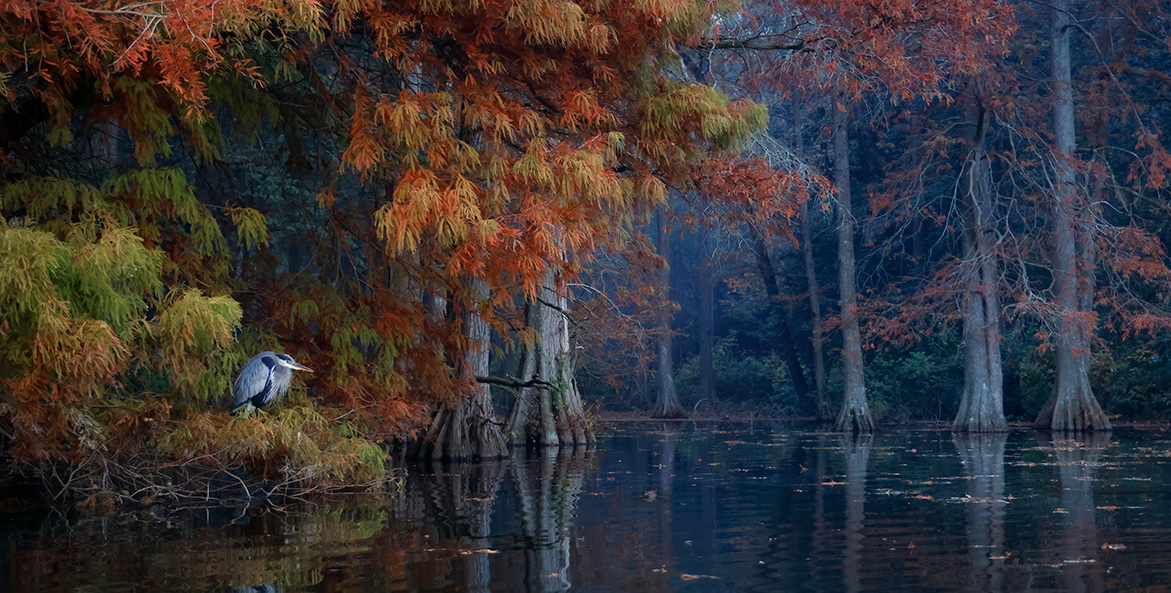If you need proof that the Chesapeake Bay watershed is at a pivotal moment, this month’s headlines provide it. Just yesterday the Atlantic State Marine Fisheries Commission reviewed the concerning findings of an updated stock assessment for striped bass coastwide, a week after annual surveys in Maryland and Virginia offered a bleak outlook for young striped bass in the Bay. There is also evidence of trouble for young blue crabs, part of an ongoing mystery surrounding the Bay’s blue crab population. Yet there is plenty of good news, too. Virginia reversed course on reopening the winter harvest for blue crabs, a controversial move that had invited public backlash. Maryland identified three new rivers for large-scale oyster restoration, while a proposed federal bill would provide more support for oyster recovery. And in Pennsylvania, new grant funding will help expand CBF’s forested buffer work on agricultural land in 12 counties, improving water quality and fish and wildlife habitat. These stories showcase progress is possible when resource managers, local communities, volunteers, restoration groups, and decisionmakers work together to solve problems—a key part of what has made the unique, 40-year Chesapeake Bay restoration partnership so successful. The question now is, can the partnership reinvent itself to meet the challenges of restoration in the 21st century? Also this month, find: more updates from around the Bay in the fall issue of our Save the Bay magazine; resources to help acknowledge the original stewards of our watershed; and ways to stay cozy this fall.
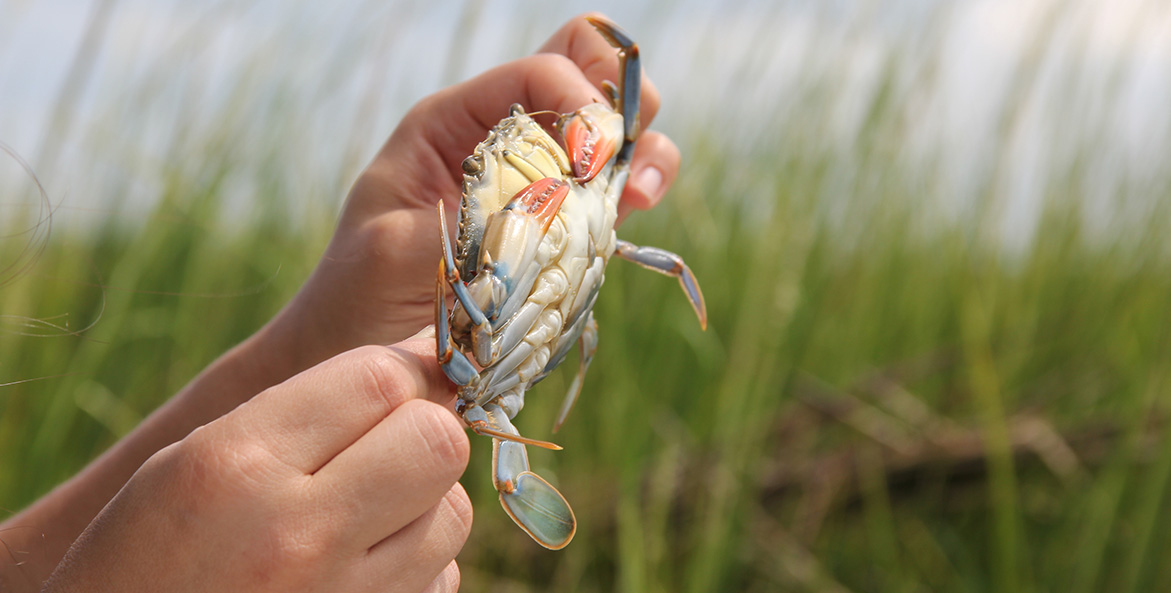
Kenny Fletcher/CBF Staff
A Blue Crab Mystery
Blue crabs are one of the most loved and studied creatures in the Bay. Yet they remain in many ways an enigma. One mystery is of particular concern to scientists and managers now: Why isn’t the population doing better? We examine some of the uncertainties surrounding young blue crabs, predators, habitat, and fishery management.

Some of the suggested changes to restoration programs include a greater emphasis on holistic habitat restoration that benefits both wildlife and communities, much like the living shoreline under construction here.
Sue Mangan
Caring for Our “Home Water”
Volunteers are the backbone of CBF’s work. Whether cleaning up trash along rivers, transporting millions of oyster larvae, or strapping on waders to document restoration projects, their stories are many and varied. However, they all have one thing in common: a deep commitment to saving the Bay and their “home water” in any way they can.
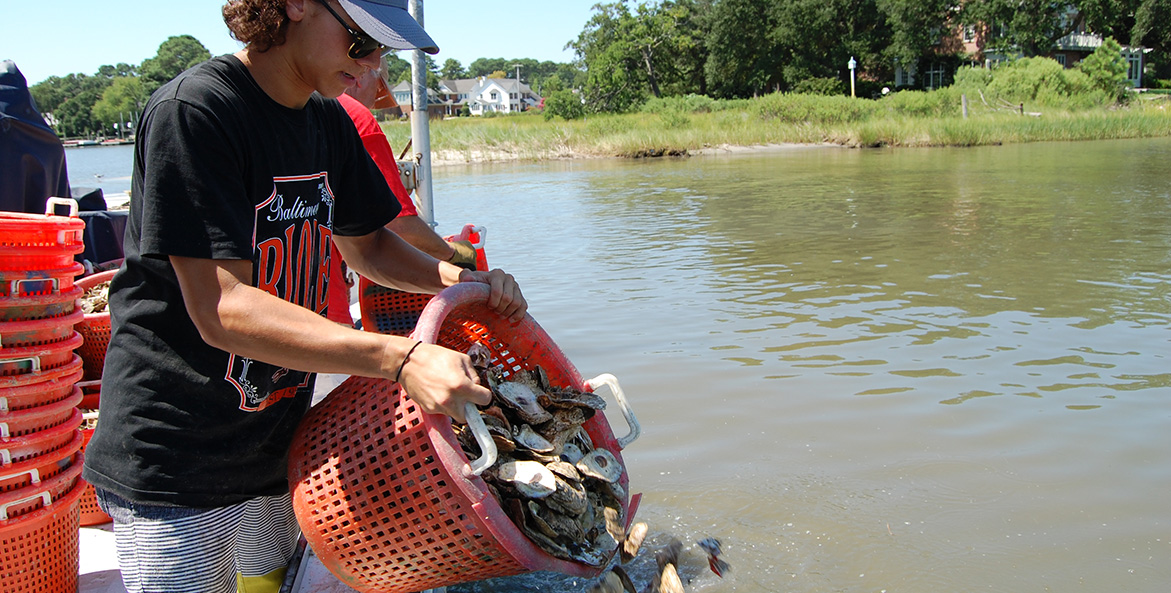
Water quality is just one of 10 goals included in the Chesapeake Bay Watershed Agreement, which guides the Chesapeake Bay Partnership. Among the other goals is restoring oyster habitat and populations.
Kenny Fletcher/CBF Staff
A Grand Watershed Experiment
The Chesapeake Bay Restoration Partnership has been at the cutting edge of environmental restoration for more than 40 years. Its breadth and scope are unique among restoration efforts and integral to success moving forward. The question now is: Can the partnership reinvent itself to do restoration effectively in a vastly changed world?
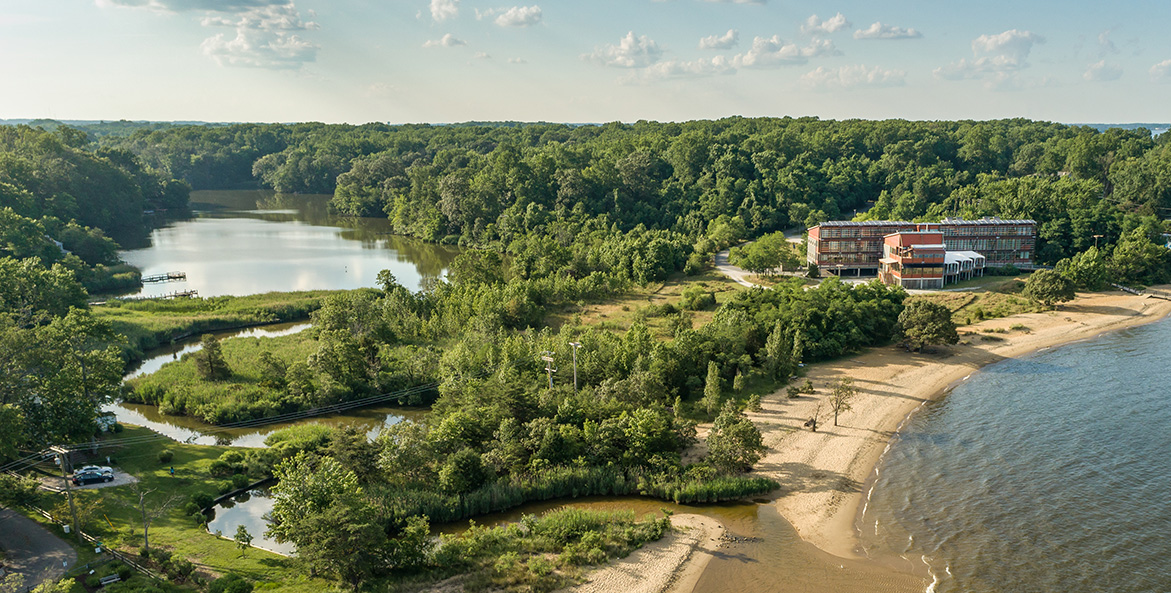
CBF Headquarters, the Philip Merrill Environmental Center, sits along the Bay in Annapolis, Maryland.
Peak Visuals
The Watershed’s Original Stewards
Before European colonists came ashore more than 400 years ago, countless Native American tribes lived from Virginia to New York. Many were killed and forcefully displaced. To honor these Indigenous communities, we acknowledge the original stewards of the land on which our office buildings sit. You can find out what tribal land you call home using the Native Land tool.
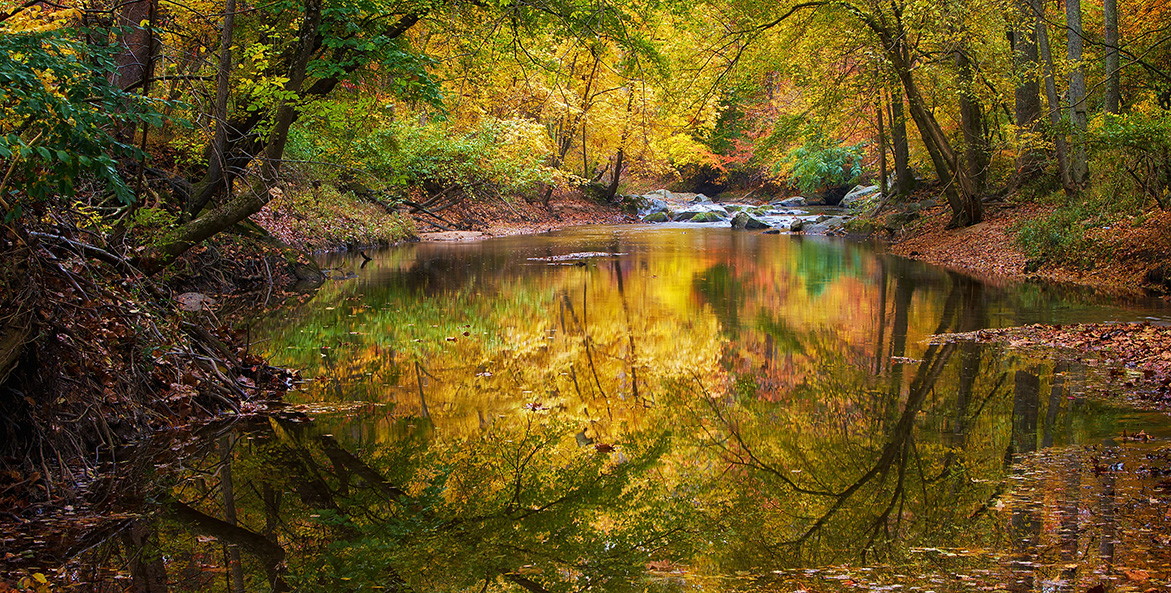
Bob Garrigus
Updates from Around the Watershed
A civil rights complaint filed to address pollution and health concerns for a community in Baltimore, a panel discussion about a new vision for the Bay, and historic investment in the Clean Streams Fund—take a look at all the recent goings on across the watershed in D.C., Maryland, Pennsylvania, and Virginia.
In the News
- Managers to consider further conservation action for striped bass: After reviewing results from a new stock assessment update, the Atlantic States Marine Fisheries Commission voted to reconvene in December for a special meeting to consider additional action.
- Virginia regulators reverse course, keep ban on winter blue crab season: The vote by the Virginia Marine Resources Commission ends the prospect of reopening the upcoming winter season and comes after months of criticism within Virginia and Maryland on VMRC’s previous decision to lift the restriction on winter harvest.
- Young striped bass continue years-long struggle in Chesapeake Bay: Results of the annual surveys for juvenile fish in Maryland and Virginia waters foretell a bleak future, with both state indexes falling far below the long-term average.
- CBF to strengthen and expand streamside buffer efforts in Pennsylvania: A $500,000 grant to CBF will help improve water quality and fish and wildlife habitat by supporting forested riparian buffers on agricultural lands, prioritizing projects in 12 counties across Pennsylvania.
- Maryland commits to additional large-scale oyster restoration: The state Department of Natural Resources announced it will target three new tributaries for large-scale restoration, including Hooper Strait and the Nanticoke River near Dorchester County, and Herring Bay in southern Anne Arundel County.
- Living shoreline project to protect Hampton City shoreline: More than 100 volunteers joined CBF and the City of Hampton to complete a living shoreline at Bluebird Gap Farm that will enhance native habitats, stabilize shorelines, and boost climate resiliency.
- Bipartisan House bill would dedicate funds to essential oyster recovery work: Reps. Jen Kiggans (R-VA) and Alexandria Ocasio-Cortez (D-NY) have introduced legislation to create a competitive grant program to support restoring and protecting oyster reefs.
- New plans in the works for cleaner streams in Lancaster and Centre Counties in PA: CBF, local residents, and other conservation organizations will work together to create watershed management plans for streams in the Conejohela Flats and Little Fishing Creek areas.
- Maryland farmers demonstrate regenerative agriculture for state leaders: The event, coordinated by CBF and Mobilize Frederick, highlighted the benefits of regenerative practices for both local farmers and the environment.
Stay Cozy with CBF's Fall Merch
Temperatures are dropping, leaves are changing, and fall merch is available at the CBF Store! Whether you're hitting the trail with a CBF Belt Bag or curling up by the fire in a CBF Watershed Hoodie, the CBF Store has the perfect fall gear for every occasion.
What You Can Do
- Election Day is right around the corner—the Bay can't vote, but YOU can! Do your part and pledge to vote for the Bay this November.
- Stay warm this winter with hearty soups and stews made from fresh, local produce! Now is the time to purchase your 8-week winter Community Supported Agriculture share from CBF's Clagett Farm.
- Host a fundraiser to benefit the Bay! CBF's BayRaiser tool lets you unleash your creativity while supporting an important cause. Whether you’re whipping up treats for a bake sale, hosting a friendly competition, or getting sudsy with a company car wash, you can create a custom BayRaiser page to showcase your event.
If you would like to receive these periodic updates directly to your email, sign up for our Save the Bay newsletter!

